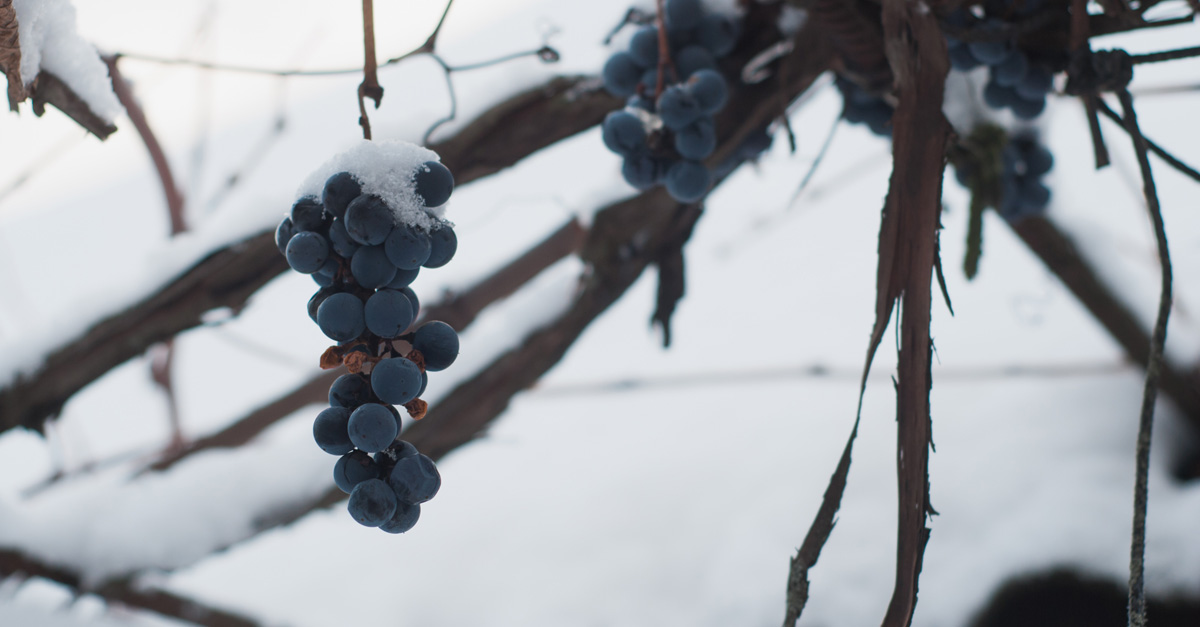Wineries in the Winter

We’ve had sunshine and temperatures over 30 degrees where I live for 2+ days and my mind has flipped to Spring.
Unfortunately for me, we are in what some call “Fool’s Spring”, which comes after Winter but before Second Winter.
As I sipped a delicious crispy white wine today and turned my face to the fleeting sun, it made me think: What have wineries been doing for the past three months? What do they do in Second Winter?
I’d like to think that the hardworking viticulturists and oenologists get to sit back with a nice glass of their favorite vintage, but I have a sneaking suspicious that is not the case.

Hibernating is not an option
First, even though during the Winter vines go dormant, this does not mean they’re not doing important internal work! While they do not create new growth above ground during this time, they are sending root flush down into the earth to intake nutrients. The plant then hoards this nutrients like Smaug protecting his treasure. (where my LOTR nerds at?!) This hoarding will help jumpstart Spring growth, but also helps ensure the vine doesn’t freeze through during the coldest months.
As I was looking into this topic, probably the most surprising task on the Winter to-do list was pruning.
I always think that pruning happens in early Spring, during those days when the world smells like promise and the sun’s rays are a little bit warmer. But in actuality, pruning the vines can start as early as Thanksgiving, with many vineyards starting in mid-December, and can last all the way through March.
Pruning the vines is a crucial step in prepping the next year’s harvest for success. Cutting back the vines involve removing most of the canes, which are lateral young, thin growth on the vines that grew during the summer.
While it may seem contrary to remove most of the new growth (don’t they want their vineyards to grow, both in an agricultural & financial sense?!) getting rid of the small, dinky growth is a good thing.
Removing the canes allows the plant to concentrate its energy into the smaller amount of remaining arms and trunk, keeping these hale and healthy during the Winter and prepping them to produce desirable fruit in the Spring. It also ensures that the vine stays at a manageable size; a vine with a crazy amount of arms can actually shade out its own fruit! That means the grapes won’t get the needed amount of sunlight for the juicy plumpness we want in a wine grape. And, having too many arms will lead to too many grape clusters - again, why is this bad?! - but this is not ideal as the vine will have to split its carbohydrates between the clusters, instead of concentrating all that sugary goodness into one.
So, they prune to keep the vines at a manageable size to ensure an appropriate yield for the following year. If they want to grow larger as a vineyard, they get additional vines!
Many vineyards leave the cuttings and fallen leaves and use it as compost and protection for the plants during the winter; so even if they’re gone from the plant, they’re still being put to use.

The early wine gets the bottle
Working out in the vineyard isn’t the only work being done at a winery during the Winter months. Winemakers will be busy in the cellar all winter long.
First, to state the obvious, once harvest is complete, well… now you have a bunch of grapes you need to make into wine! The process differs between white and red (and sparking and fortified) but all of them need to go through crushing, destemming, must adjustments, maceration, and some sort of fermentation, all of which takes (wo)man-power, knowledge, and time.
White and rosé wines can then sometimes be bottled very quickly - as early as February of the same Winter, whereas red will go through additional fermentation or barrel-aging. Those two processes take a watchful eye! Then, wine in barrels will need to be tested or topped up, and potentially blended before bottling.
And if a winery also makes a sparkling variety, there’s a whole shebang of tasks that come with that as well. While sparkling wine goes through the same checklist as above, it then goes through a second fermentation in the bottle, which then goes through a riddling process (each bottle is shaken and rotated) and then is disgorged (each bottle is opened and its yeast extracted). While much of this is now does in a more mechanized way, it still requires the technical know-how and time.
While all of this is going on day to day, the winery could also be bottling old vintages, prepping labels, ticketing bottles, making sales, and working on marketing.

Diversification is key!
As an “adult” I feel like I hear this advice all the time (especially from those in a creative field): diversify your income streams. Wineries have this on lock down, and Winter is a great time for those side hustles to ramp up.
Most wineries have a “front end” business; this can include everything from having a tasting room, to hosting community events, to acting as a wedding venue. For example, I just typed “Winery Events” into Google and the search engine nicely laid out 10+ events in my direct area for the next two months. These included everything from wine & food pairing events with local restaurants, to live music events, to special vintage releases - and that’s not including the private events they host as well, like weddings and corporate events.
I’m exhausted now, and I’m not even responsible for any of this stuff - phew!

Weekly Adventure
Everyone’s task this week is to research a local winery and their upcoming events. Let’s get out of our hibernation caves and into the wine cellars!
Cheers,
Molly
References:
2022 Certified Specialist of Wine Study Guide




